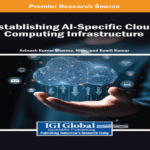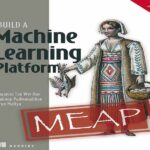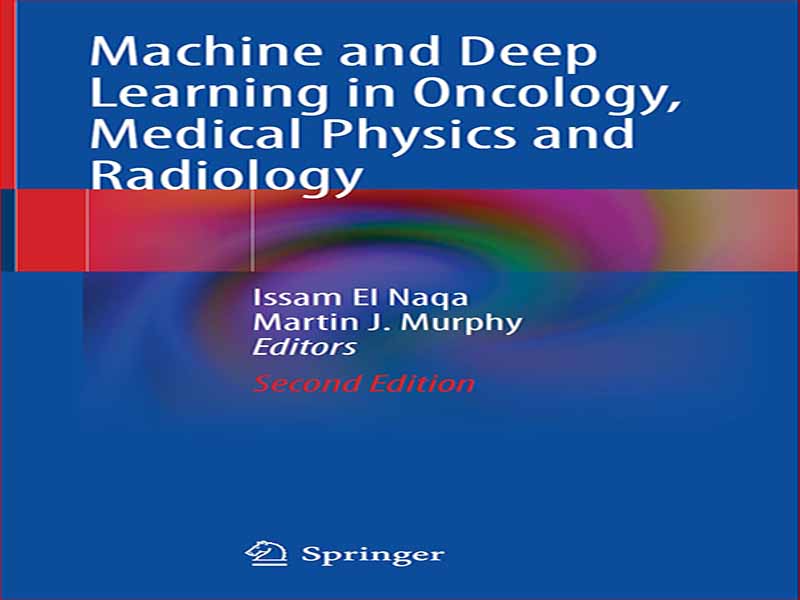- عنوان کتاب: Machine And Deep Learning In Oncology Medical Physics And Radiology
- نویسنده: Issam El Naqa Martin J Murphy
- حوزه: یادگیری ماشین, انکولوژی, رادیولوژی
- سال انتشار: 2022
- تعداد صفحه: 514
- زبان اصلی: انگلیسی
- نوع فایل: pdf
- حجم فایل: 15.88 مگابایت
این کتاب بر اساس یکی از مهمترین نتایج نوظهور انقلاب در حال انجام رایانه است، یعنی اینکه رایانهها را میتوان آموزش داد – تحت شرایط مناسب – برای طبقهبندی قابل اعتماد دادههای جدید، مانند دادههای بیمار. این قابلیت که یادگیری ماشینی (یا یادگیری آماری) نامیده می شود، در بسیاری از زمینه های فناوری، تجارت و پزشکی به کار گرفته شده است. دادهکاوی و مدلهای پیشبینی آماری قبلاً در بسیاری از حوزههای زندگی مدرن از جمله تبلیغات، بانکداری، ورزش، پیشبینی آبوهوا، سیاست، علم به طور کلی و پزشکی بهویژه نفوذ کردهاند. توانایی رایانهها برای برقراری ارتباط فزاینده با مردم به روشی طبیعی (درک زبان و صحبت کردن با ما)، مانند ظاهر معروف IBM “Watson” در Jeopardy، یا “Siri” در iPhone، نقش شتابدهندهای از مدلهای کامپیوتری پیچیده را نشان میدهد. پیش بینی و پاسخ به درخواست های ما. اساساً، این پیشرفتها به توانایی روشهای کامپیوتری آماری برای کشیدن (به قول نیت سیلور) “سیگنال از نویز” متکی است. در حالی که روشهای آماری سنتی معمولاً تلاش میکنند تا نقش متغیرهای خاص را در تعیین یک نتیجه مورد علاقه مشخص کنند (از این رو، نیاز به نقاط داده زیادی برای هر متغیر موجود در مدل پیشبینی است)، یادگیری ماشین نشاندهنده هدف متفاوتی است، برای پیشبینی قابل اعتماد یک نتیجه، به عنوان مثال که یک ناهنجاری تصویربرداری با درجه اطمینان بالایی خوش خیم است. آماردانان و دانشمندان کامپیوتری که در این حوزه نوظهور کار میکنند، اغلب از استفاده از تعداد زیادی متغیر (یا نمونههای داده قبلی) که اساساً با هم به شکل غیرخطی رأی میدهند، خوشحال هستند. سادگی با یک توانایی بهبود یافته برای پیش بینی معامله می شود.
This book is based on one of the most consequential emergent results of the ongoing computer revolution, namely, that computers can be trained—under the right conditions— to reliably classify new data, such as patient data. This capability, called machine learning (or statistical learning), has been deployed in many areas of technology, commerce, and medicine. Data mining and statistical prediction models have already crept into many areas of modern life, including advertising, banking, sports, weather prediction, politics, science generally, and medicine in particular. The ability of computers to increasingly communicate with people in a natural way (understanding language and speaking to us), such as the famed IBM “Watson” appearance on Jeopardy, or “Siri” on iPhones, portends an accelerating role of sophisticated computer models that predict and respond to our requests. Fundamentally, these developments rely on the ability of statistical computer methods to pull (as Nate Silver puts it) “signal from the noise.” While traditional statistical methods typically attempt to ascertain the role of particular variables in determining an outcome of interest (hence, needing many data points for every variable included in the prediction model), machine learning represents a different goal, to reliably predict an outcome, for example that an imaging abnormality is benign with a high degree of certainty. The statisticians and computer scientists working in this emerging area are often happy to use large numbers of variables (or previous data instances) that essentially vote together in a nonlinear fashion. Simplicity is happily traded for an improved ability to predict.
این کتاب را میتوانید از لینک زیر بصورت رایگان دانلود کنید:
Download: Machine And Deep Learning In Oncology Medical Physics And Radiology



































نظرات کاربران